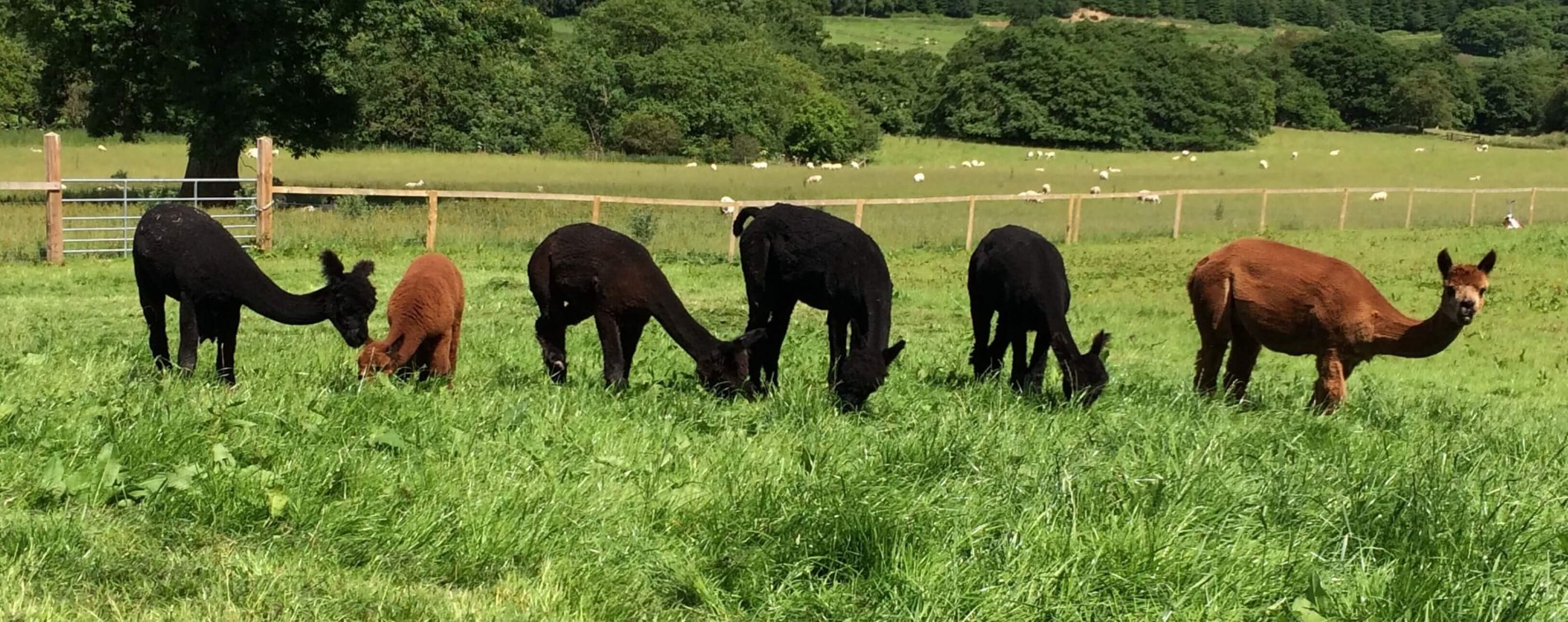
About Alpacas
What is an Alpaca?
Alpacas are part of the camelid species and are closely related to the llama.
Originating from South America including Peru, Chile, and Bolivia.
Alpacas were firstly exported to Australia and the USA in the early 1990’s, which led to exported to Europe and the UK in the mid-1990’s.
The number of Alpaca owners and breeders continues to grow in the UK as people become hooked to the alpaca dream both for a business or just as pets.
There are two types of alpacas Huacaya and Suri, the Huacaya fibre growing vertically out of its skin in small bundles with a tightly crimped wave where the Suri fibre growing out of the skin in bundles/locks without any crimped wave twisting and hangs like a dreadlock effect.
Our alpacas are all Huacaya so when is full fleece look like giant Teddy Bears.
The main diet of an alpaca is grass, which we top up with a supply of hay and specialised alpaca supplements especially for our pregnant and growing alpacas.
Fresh clean water needs to be available at all time and in the winter they love warm water too.
Our alpacas also enjoy treats like carrots, runner beans and cabbage.
During the winter months when the sunshine levels are low and the grass stops growing, we also give vitamin paste every four to six weeks.
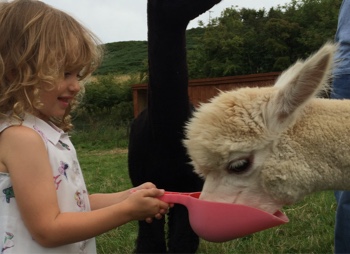
Is it a Llama?
This is a regular question we’re asked.
Both Llama and alpaca are part of the camelid family although a llama can grow up to twice the size of an alpaca.
Llamas tend to have long banana sized ears and produce a coarse fleece compared with an alpaca with shorter spear size ears and a dense soft fleece.
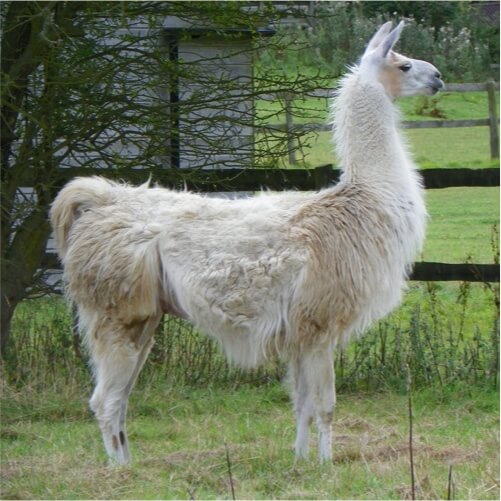
This is a Llama
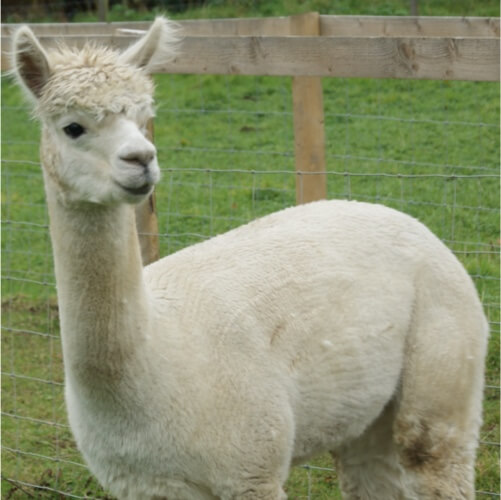
And this is Cookie, one of our alpacas
How we use our fleece
Every year the alpacas are sheared to make them more comfortable during the summer months and gives us the opportunity to work with "the fiber of the gods".
Each fleece is skirted to remove any debris and to select the best parts to produce into yarn. All of the fleece we use is from alpacas who live in North Yorkshire and our knitted items are 100% alpaca fibre.
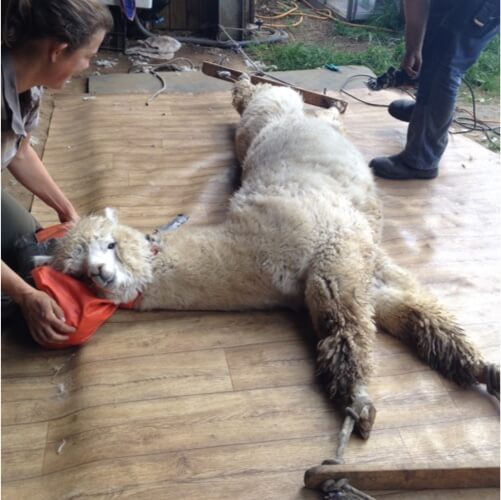
Cookie being sheared
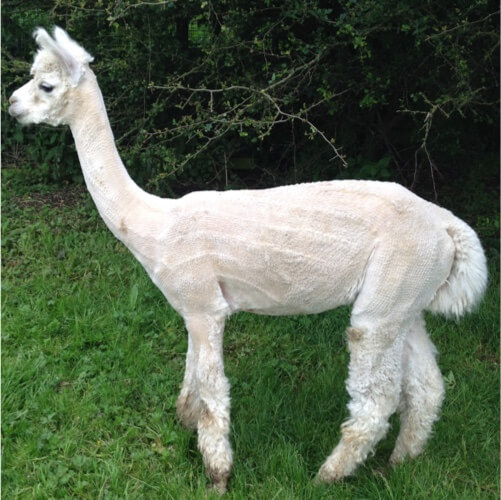
and after
Small amounts of the fleece are hand washed several times and left to dry naturally.
Once dry the fibre is hand carded on a drum carder to free the fibres ready for spinning.
I use a double drive traditional spinning wheel to spin the fibre into yarn before knitting into a range of items. Alpaca fibre is 3 times warmer than sheep's wool, finer and comes in 22 natural colours.

Selection of raw fleece

This is a drum carder for processing the fleece
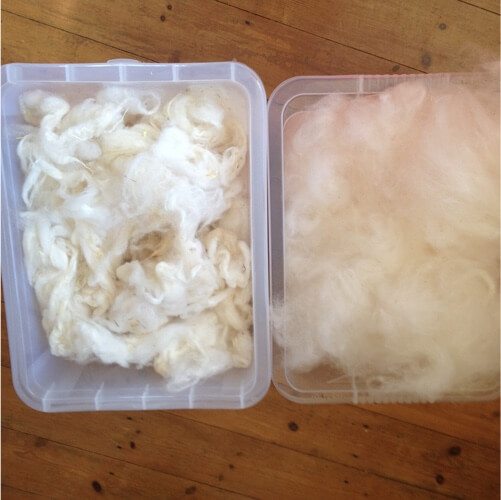
Uncarded and carded fleece

Traditional spinning wheel